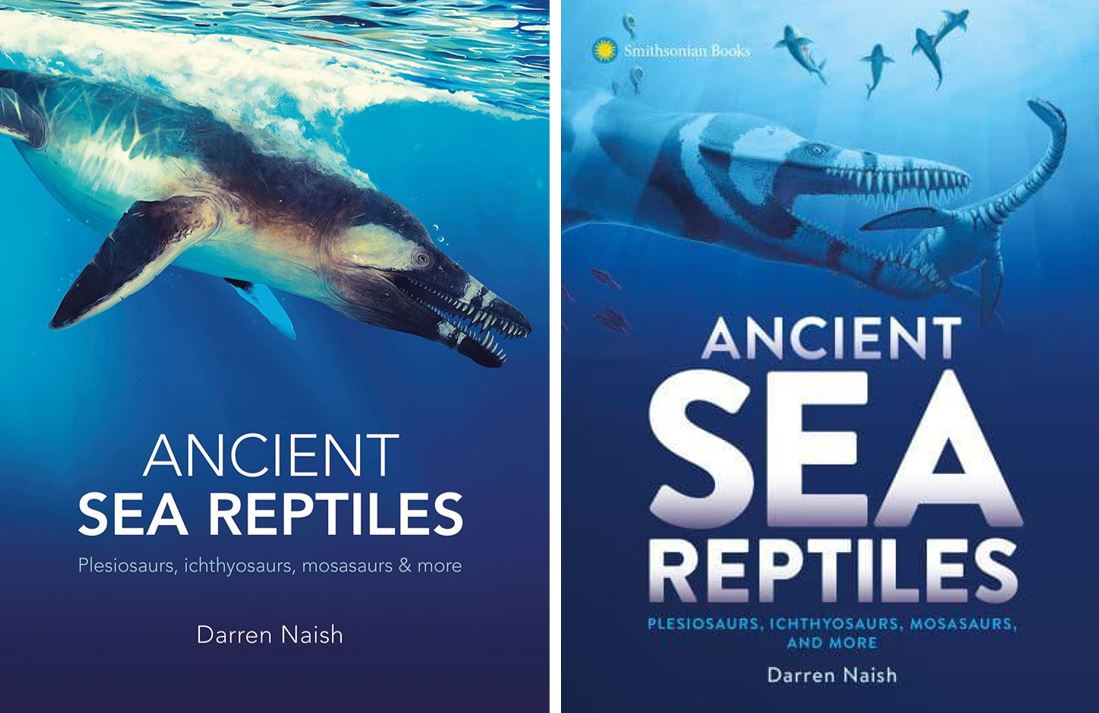Exploring Ancient Sea Reptiles
This blog explores the amazing ancient marine reptiles of the Mesozoic and Permian eras. Learn about the amazing discoveries made about these creatures in recent years and the significance of their evolution.

Darren Naish
Zoologist, author Dr Darren Naish | Dinosaurs animals evolution | Books: DinosaursHTLE - All Yesterdays - DINOPEDIA. PREHISTORIC PLANET lead consultant AppleTV+

-
For #FossilFriday, a brief thread on some of the ancient marine #reptiles covered in my new book #AncientSeaReptiles (@NHM_London in the UK; @SmithsonianBook in the US). These animals are amazing, and we've learnt some amazing things about them in recent years. Here we go... pic.twitter.com/5KH1sSoE5C
— Darren Naish (@TetZoo) March 31, 2023 -
Ancient marine reptiles are mostly associated with the Mesozoic (252-66 mya): the #Triassic #Jurassic and #Cretaceous. But marine reptiles evolved before the Mesozoic, since we know of several groups that lived during the Permian (299-252 mya), the age before the Mesozoic...
— Darren Naish (@TetZoo) March 31, 2023 -
Mesosaurs were unusual #Permian #reptiles with swimming adaptations. New data shows adaptation to highly saline conditions, eggs that essentially lacked an eggshell, evidence for cannibalism, and unusual skull bone configuration.. colour art by @tupandactylus #AncientSeaReptiles pic.twitter.com/u5G19K9p1X
— Darren Naish (@TetZoo) March 31, 2023 -
Some experts have suggested that mesosaurs _might_ have affinities with ichthyopterygians (the big group that includes #ichthyosaurs) -- and here we come to the brand-new discovery that ichthyopterygians were also present in the Permian! Will discuss this in future editions :) pic.twitter.com/L4W2gbwLps
— Darren Naish (@TetZoo) March 31, 2023 -
Moving to the #Triassic, a great radiation of sauropterygians (saw-rop-teri-gee-uns) occurred. #Plesiosaurs are sauropterygians, but so are the snappy-jawed nothosaurs and the small pachypleurosaurs. Fossils show that both groups included viviparous species, but egg-layers too... pic.twitter.com/Dii3yVRz1C
— Darren Naish (@TetZoo) March 31, 2023 -
The shellfish-eating #placodonts of the #Triassic seas are sauropterygians too, but we don't know anything about their reproduction. Some placodonts evolved a turtle-like appearance, but weren't close kin of turtles at all... #AncientSeaReptiles pic.twitter.com/2BbBXr0dZf
— Darren Naish (@TetZoo) March 31, 2023 -
Those #placodont images are from this 2004 article I published on the group, which is now very out of date due to a flurry of new studies and new discoveries -- most of which is summarised in #AncientSeaReptiles... https://t.co/xSLFnN6Bse
— Darren Naish (@TetZoo) March 31, 2023 -
As you can see from this family tree diagram (from #AncientSeaReptiles), viviparity in pachypleurosaurs and nothosaurs implies its evolution long before plesiosaurs evolved. Apparently most sauropterygians gave birth to live babies, though bring on that data for placodonts! pic.twitter.com/VOZqBhko7q
— Darren Naish (@TetZoo) March 31, 2023 -
That's where we'll end for now. This is a fast moving field and many relevant new studies have appeared since #AncientSeaReptiles went to print - I'll discuss the new discoveries in another thread! Buy Ancient Sea Reptiles today, thanks to those who've done so already :) #books pic.twitter.com/y0Spxhzh0t
— Darren Naish (@TetZoo) March 31, 2023
